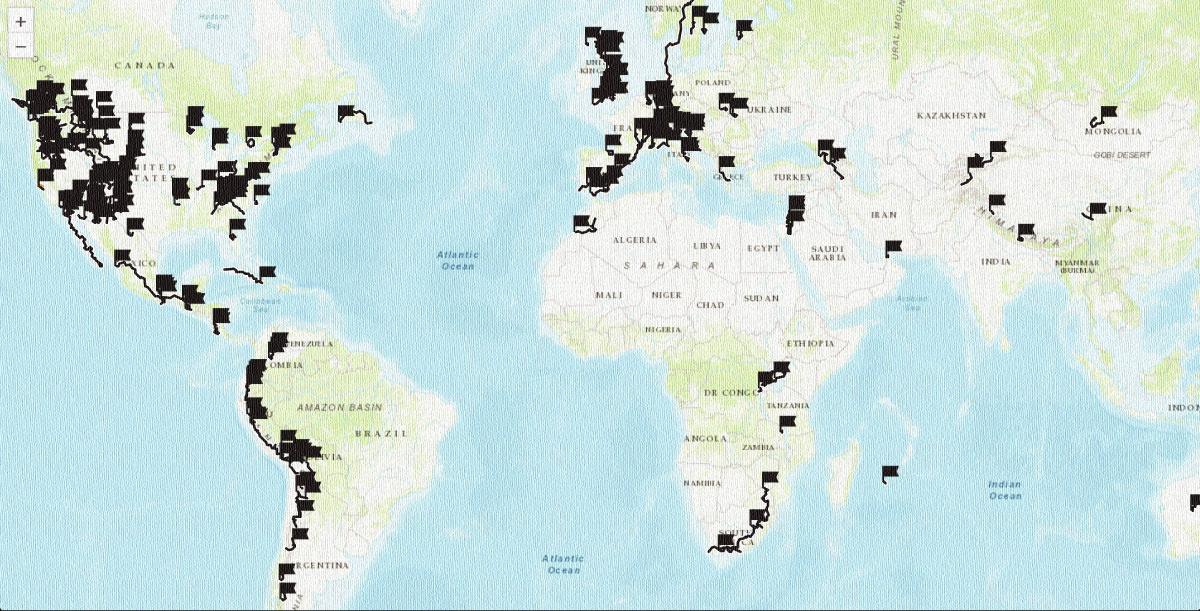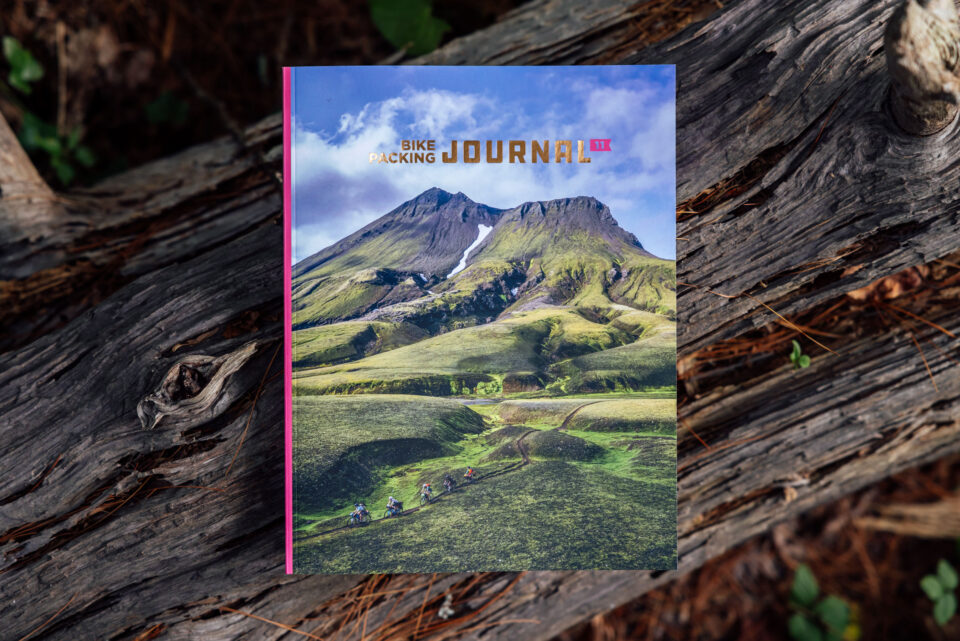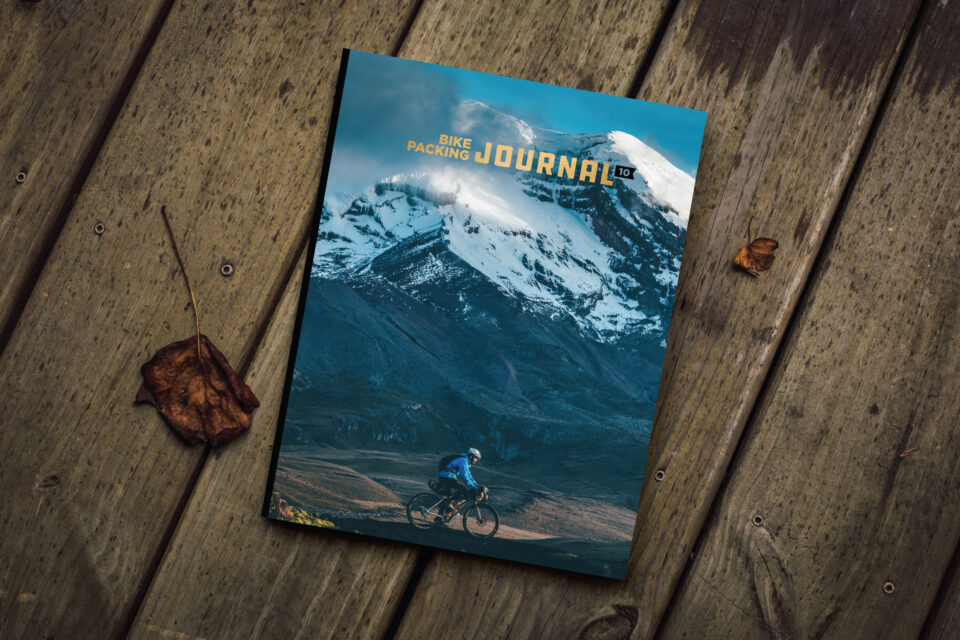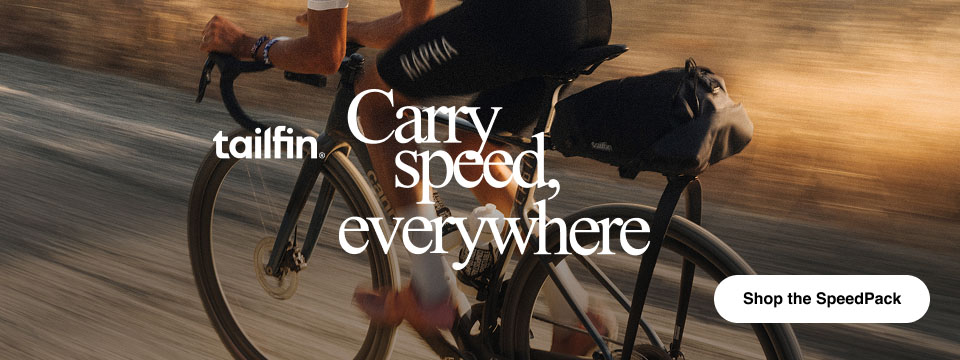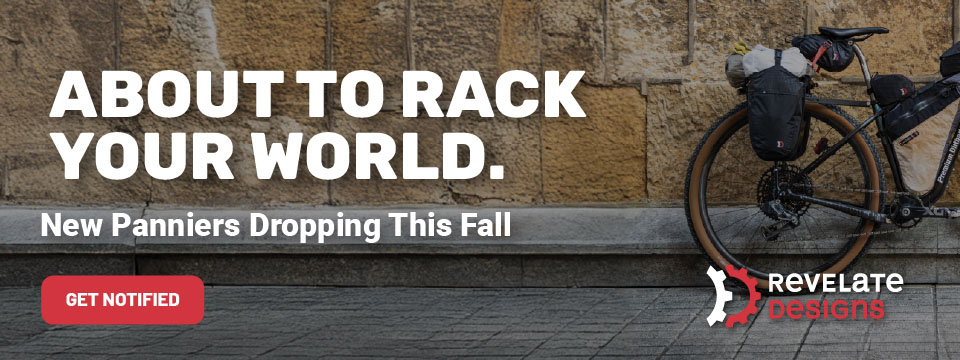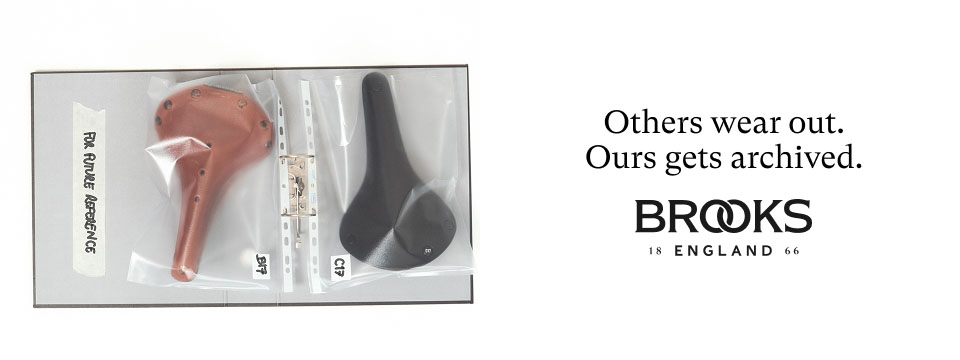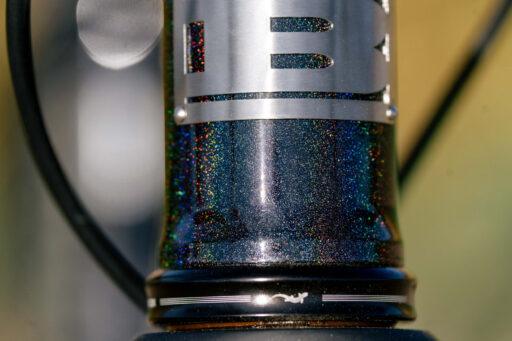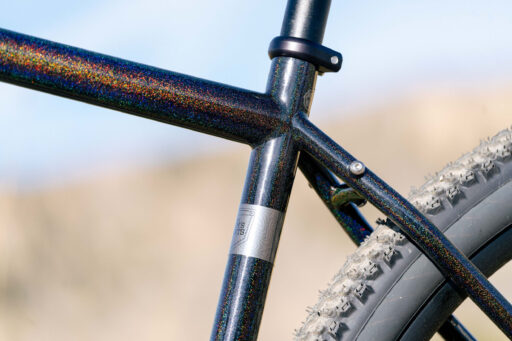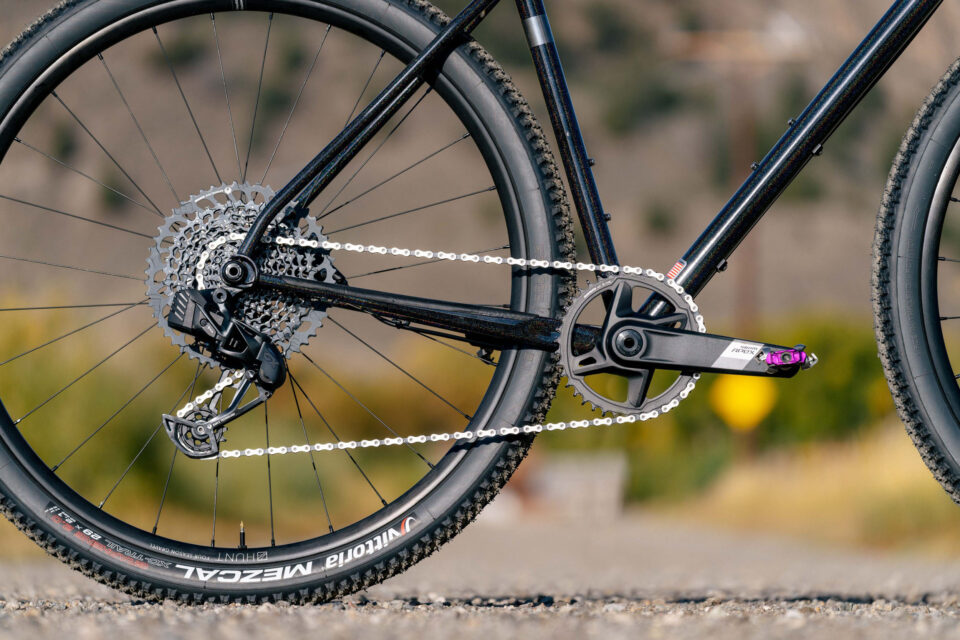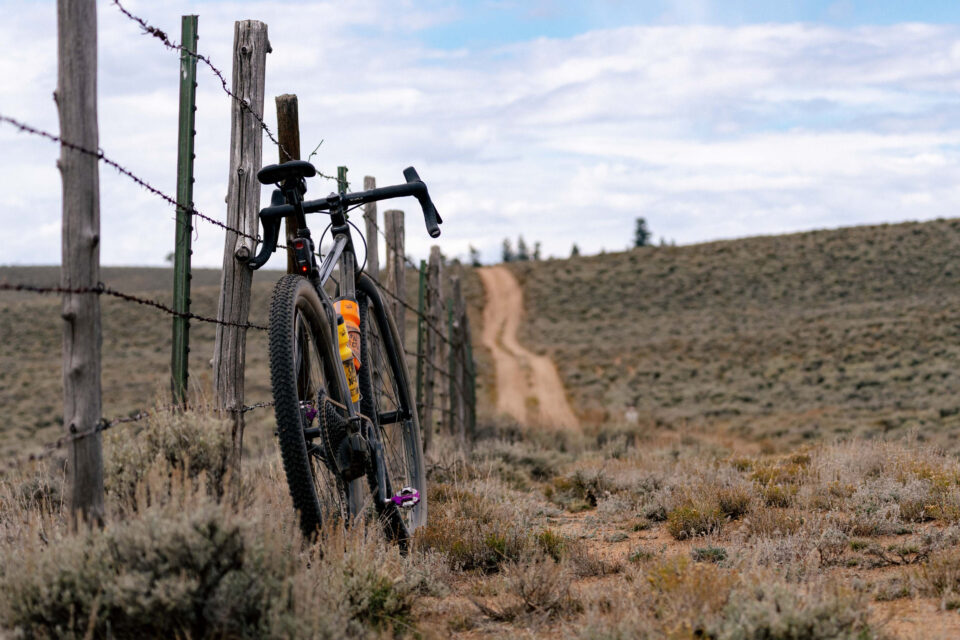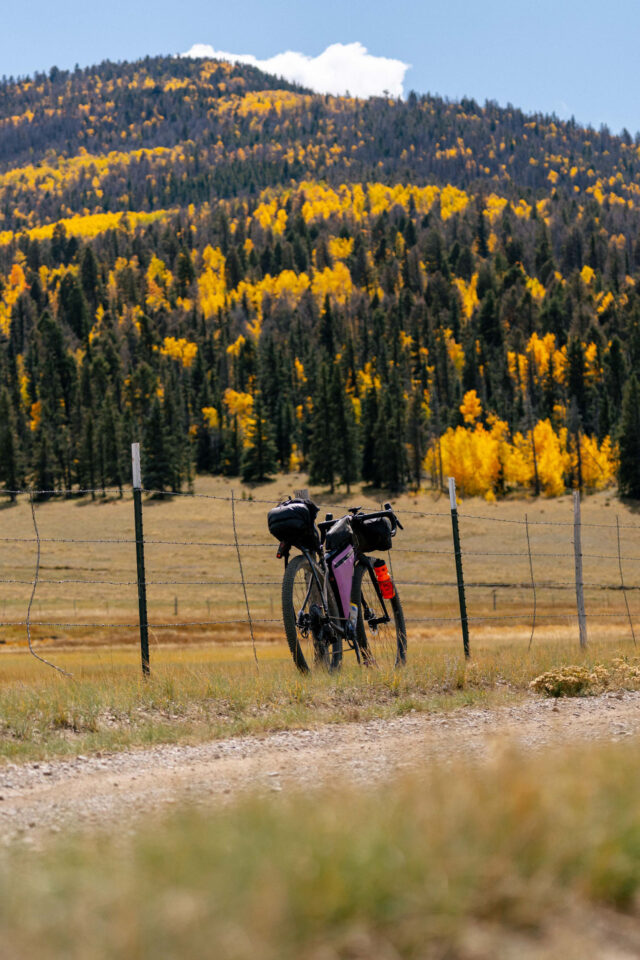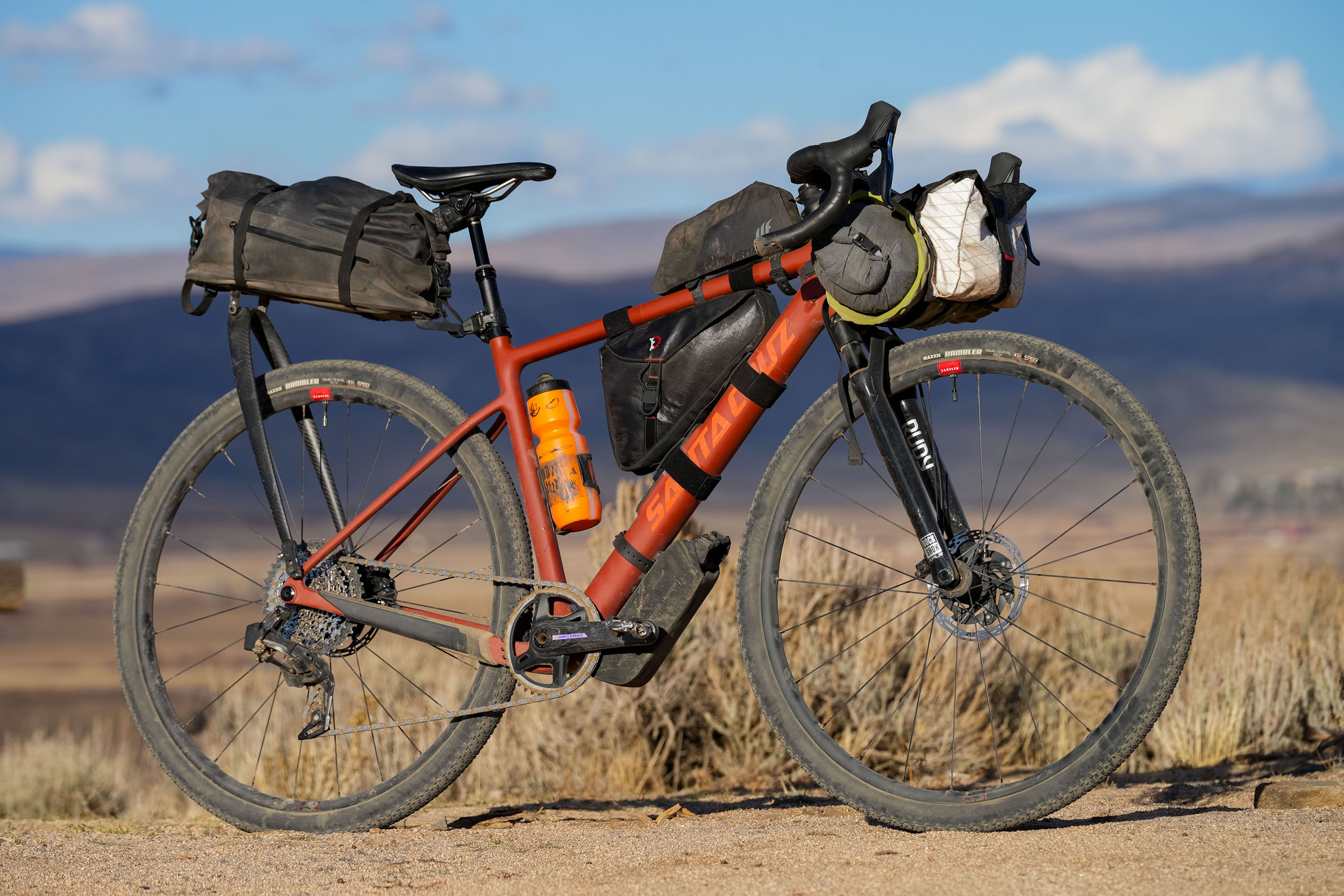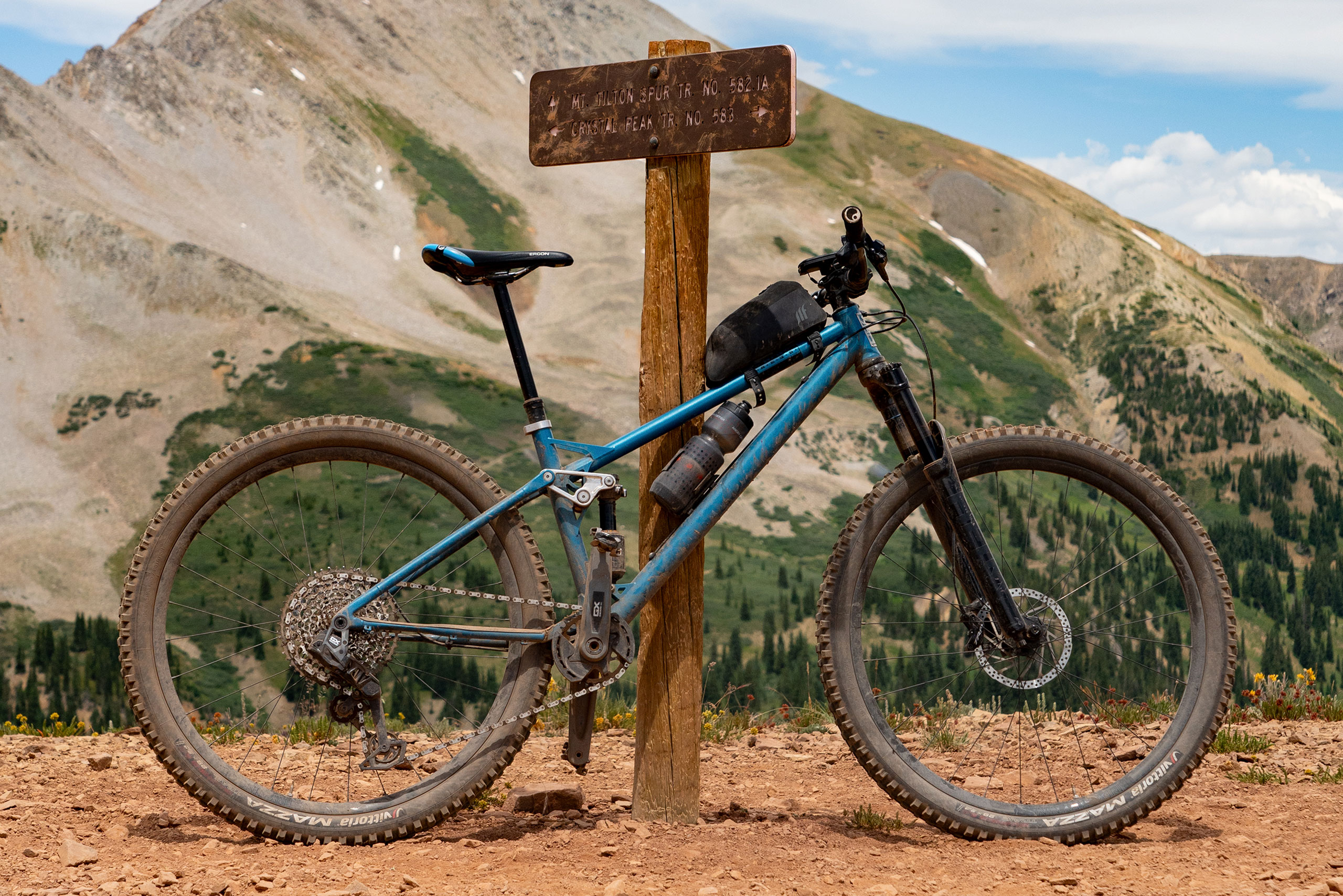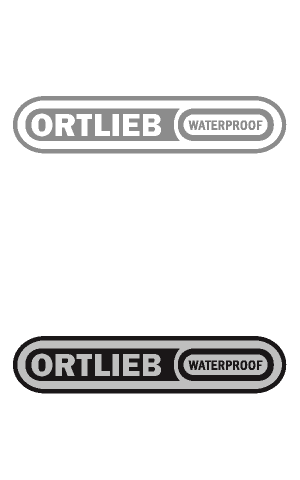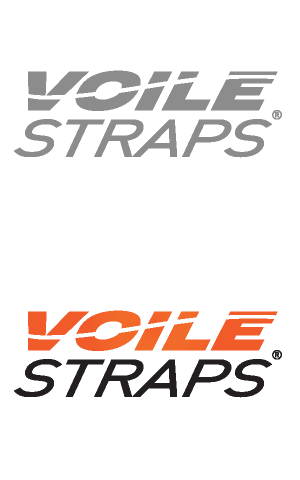REEB Sam’s Pants Review
Earlier this year, REEB announced the return of the Sam’s Pants, their long-standing drop-bar bike. Neil’s been testing it over the past month on everything from short day rides to a bikepacking trip, putting in over 300 miles for a full test. Watch and read the REEB Sam’s Pants review here…
PUBLISHED Oct 16, 2025
With additional riding photos by Eric Dabbert
If you haven’t heard of the REEB Sam’s Pants, it’s the brand’s longest-running model, first introduced in 2012. Conceived as a do-everything bike for Oskar Blues Brewery employees, it set out to cover monster cross, commuting, cruising, gravel, and even singletrack. True to that intent, it’s been built a dozen different ways over the years.
The name nods to a local shop kid, Sam, who popularized the skinny-jeans, drop-bar look around the REEB crew—so when they launched their first gravel drop-bar bike, they cheekily named it after him.

In 2015 the Sam’s Pants earned bikepacking cred when Joe Grant lined up at the Colorado Trail Race and became one of the few riders to finish on a drop-bar rig—clocking 5d:07h:31m on his first CTR. REEB later refreshed the platform for 2020 with clearance for 29 × 2.1″ tires, a 73 mm MTB BB shell, Paragon Machine Works dropouts, a 44 mm head tube, a third bottle boss under the down tube, and a 31.6 mm seat tube for modern droppers.
Now, as REEB enters its 15th year building steel bikes, the Sam’s Pants returns from a brief hiatus with thoughtful updates that modernize their gravel drop-bar rig. Find my full REEB Sam’s Pants review video below, and scroll down for a written version with photos, charts, and pros and cons.
REEB Sam’s Pants Specs and Sizing
Like all REEB bikes, the Sam’s Pants is designed and built in the United States. This frame uses a Columbus Zona tubeset—double- and triple-butted seamless steel—which feels like a perfect match for this build (more on that soon).
The chassis is built around a 420mm axle-to-crown to accommodate modern gravel suspension forks. Updates include a fixed UDH dropout, 44mm head tube, 68mm threaded BB, 142×12mm rear spacing, flat-mount brakes, internal dropper routing, and external brake/shifter routing. It takes a 27.2mm seatpost, clears up to 2.2″ tires, is 1x-specific with a max 42T ring, and—like most REEBs—comes in six sharp color options. The Ka-Chow finish I tested looks understated until the light hits it; then the subtle sparkle pops. I love it.

The new Sam’s Pants comes in five sizes (XS–XL). I tested a Medium, and at 5’9.5″ it fits me very well. REEB recommends the Medium for 5’7″–5’10”. Key numbers: 573mm effective top tube, 400mm reach, 576mm stack—about the same stack as the previous Sam’s Pants with a longer reach. It’s a touch longer in reach and slightly lower in stack than the Otso Warakin, and quite close to my Santa Cruz Stigmata (576mm stack, 405mm reach).
The Sam’s Pants puts you in a riding position that strikes a sweet balance—not too upright, not too racy—keeping you comfortably “in” the bike on gravel and pavement while feeling capable and confident when things get rough or you dip onto singletrack.
Geometry
Now for the angles: the head tube stays at 70°, unchanged from the previous model. The seat tube steepens slightly to 73.5°, largely to balance a longer front-center, which grows 16mm (from 621 to 637mm). The result keeps your weight nicely centered on flats, descents, and climbs—I felt balanced even on the steepest pitches.
| Size | XS | SM | MD | LG | XL |
|---|---|---|---|---|---|
| Effective TT Length | 541 | 555 | 573 | 594 | 613 |
| Reach | 375 | 385 | 400 | 415 | 430 |
| Wheelbase | 1028 | 1043 | 1061 | 1084 | 1104 |
| CS Length | 435 | 435 | 435 | 435 | 435 |
| Effective ST Angle | 73.5° | 73.5° | 73.5° | 73.5° | 73.5° |
| ST Length | 450 | 465 | 485 | 515 | 545 |
| HT Angle | 70 | 70 | 70 | 70 | 70 |
| HT Length | 95 | 110 | 120 | 145 | 165 |
| BB Drop | 75 | 75 | 75 | 75 | 75 |
| Stack | 553 | 567 | 576 | 600 | 614 |
| Rider Height | 5’1″-5’4″ | 5’4″-5’7″ | 5’7″-5’10” | 5’10”-6’1″ | 6’1″-6’4″+ |
Chainstays are 435mm—pretty standard for the category—yielding a 1,061mm wheelbase. BB drop is 75mm, a touch higher than something like the Stigmata, but paired with bigger tires it feels right; stability never suffered and singletrack manners actually improved.
I did get a bit of toe overlap on the Medium, likely due to my setup: larger feet for my height and cleats slammed rearward to reduce Achilles strain, which pushes my toes forward. Most riders with more typical proportions shouldn’t have an issue, and even for me it wasn’t the hindrance I felt with the Surly Straggler.

Off the bike, standover was a non-issue (787mm / just under 31″ on the Medium). Overall, I’d call this “progressive gravel” geometry—closer to the Stigmata than the more traditional Otso Warakin. But what does “progressive geometry” actually translate to on the trail?
On Gravel and Trails
As mentioned up top, I didn’t log tons of hours on this bike, but I made the most of the time I had—I couldn’t bring myself to ride anything else. I loved how it rode. It’s genuinely efficient, it nudged me out the door and kept me riding farther than usual, and it does so with more conviction than many gravel bikes I’ve tested. It has that rare versatility: spin mellow gravel one minute, dive into singletrack the next. I suspect that’s down to the geometry and how they squeezed in 2.2” tire clearance.

We’re seeing more bikes embrace bigger rubber. While it might not jump off the line quite like my Stigmata—435mm chainstays vs. the Stigmata’s 423mm—the trade-off is worth it. The Stigmata feels tight on clearance; even 50mm tires get cramped once there’s mud.
The Sam’s Pants isn’t slow by any means. From the geometry to the Zona tubeset and overall build, it feels dialed. Hammering uphill or out of the saddle, it stays composed with no unwelcome lateral flex. That stiffness translates to a connected feel, higher average speeds, and confidence that nudges you to push harder.

Point it downhill and it remains calm. The longer wheelbase helps, but the standout is comfort. At speed it’s planted and predictable through corners, and on rougher, chunkier stretches the Zona tubeset offers surprising vertical give. Loaded or not, it never felt noodly—just the right amount of compliance. On washboard and small chatter, it damps vibrations impressively well.
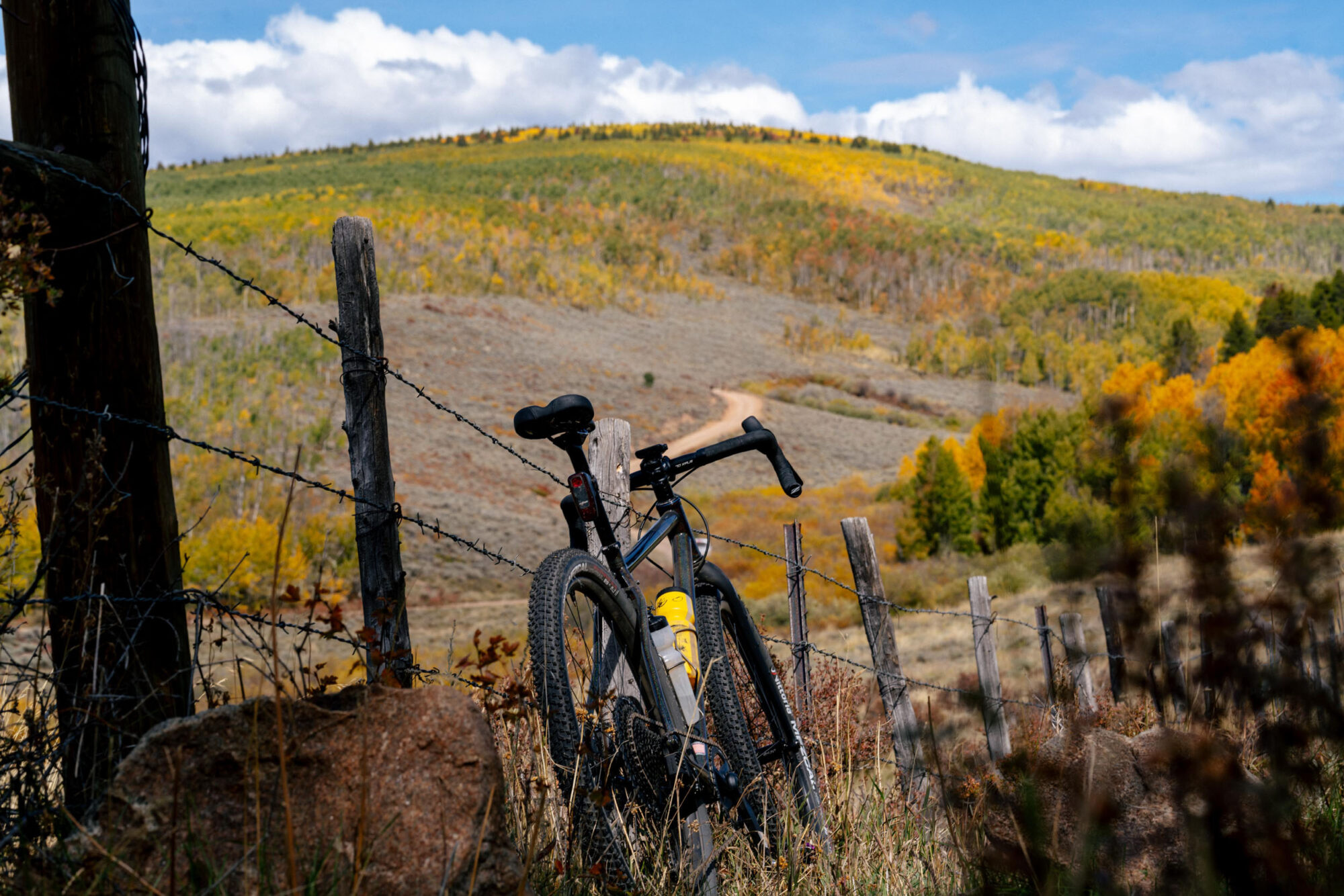
I have a vivid memory of riding the same section on my Stigmata and feeling more beat up—funny, given carbon’s usual damping advantage. The Sam’s Pants might do it better—and sure, the 2.1” Mezcals help—but the Zona tubeset seems to play a big role. Compared with the new Surly Straggler’s less inspiring geometry and tubing, the difference was even clearer. Bottom line: I really loved how this frameset rides.
Out Bikepacking
Speaking of comfort, it handled a bikepacking load really well. It never felt soft or noodly; it kept the same lively character, and the added weight actually made the bike feel more planted—especially in corners and on descents where that extra stability was welcome.

I found a frame bag in my stash that fit perfectly and loaded it for a bike-leaf-peeping trip. With several liters of water and plenty of gear inside the main triangle, the frame really came to life. The bike also includes rear rack and fender mounts, plus three bottle mounts—two in the triangle and one under the downtube—all of which saw heavy use and were much appreciated during testing.
One small detail I loved: the rack/fender mounts sit nice and low near the dropout. It’s a pet peeve when mounts are placed too high, which raises the load, hurts balance, and can make a rig look awkward. I test a lot of racks and setups, and lower mounts are almost always the better choice.
The Lithic carbon fork REEB spec’d also has cargo mounts, giving plenty of options for gear—or in my case, extra water. And as noted earlier, the external routing is refreshingly easy to work with thanks to clean guides along the downtube. It’s a simple, thoughtful touch that’ll pay off down the line.
Build Kit
Reeb offers three build options—the Apex XPLR AXS Gravel Build, the Apex/GX AXS Adventure Build (tested here), and the high-end RED XPLR 13-speed Gravel Build. Surprisingly, there are no mechanical options, which is a little odd, but you can always buy the frameset and build it as you like.
- HEADSET: Cane Creek 40
- FORK: Lithic Hiili Carbon, 420mm A-C
- STEM: Zipp Service Course
- HANDLEBAR: Zipp Service Course 70 XPLR
- BARTAPE: ZIPP Service Course CX
- BRAKE/SHIFT: SRAM Apex AXS Hydraulic
- ROTORS: Paceline CenterLock 160mm
- SEATPOST: ZIPP Service Course
- SEATPOST COLLAR: bolt on
- SADDLE: WTB Volt
- WHEELSET: Hunt 4 Season Gravel
- TIRES: Vittoria Terreno T50 Mixed, 50c
- DRIVETRAIN: SRAM Apex AXS 12-spd, 11-44T
Of the complete builds, the one I tested makes the most sense, primarily for the gearing. It pairs a 12-speed 10–52 cassette with a GX derailleur, Apex crank with a 40T ring, and Apex brake/shift levers. The range is generous and it just works. I really like the Apex levers—the upper portion is wide with great ergonomics. In the drops, I had to tweak lever throw a bit, but once set, braking on rough, fast terrain felt natural. The brakes have a confident bite—some of the best SRAM brakes I’ve used recently—and the 160mm rotors front and rear offered plenty of stopping power, even loaded.

When I unboxed the bike, the bars looked small. I loved the overall build, but wasn’t thrilled about the 42cm Zipp Service Course 70 XPLR bars with an 80mm stem; I expected the front end to feel cramped. I was wrong. A wider bar can make sense—especially for bag space—but the narrower setup grew on me. The position felt adaptable: easy to get aero or sit upright for long miles. By the end of testing, those 42s were a non-issue (though I wouldn’t complain about a wider bar for more cargo room between the hoods).
One thing I could have done without was the super-loud Hunt hub. The Hunt 4 Season Gravel wheels use a 36T H-Ratchet. Engagement isn’t a big deal to me here, but the buzzy, cheap-sounding hub noise was. If I’d had more time, I would have packed extra grease in the freehub to quiet it down. It was loud enough that I found myself soft-pedaling past people to avoid the buzz.
Rounding out the build, the Zipp rigid post was fine, but I swapped it after a week for a RockShox Reverb AXS 27.2 that lives on another bike—a massive upgrade on rough terrain. It’s the number-one change I’d make for more confidence and, frankly, safer riding.
Lastly, the tires: I’ve long liked the Vittoria Mezcal on gravel, and the 2.1″ version is no exception. It rolls fast, has decent edge grip, and gives the bike a planted, capable feel. Any time you can run this much volume on a gravel frame, it’s inspiring. In a sea of choices, the Mezcal remains one of the most versatile and confidence-inspiring options out there.
What I’d Change
I like including this segment in reviews because it invites the “perfect bike” question—and, realistically, there isn’t one. That said, Sam’s Pants is no slouch; it isn’t reinventing the wheel so much as building on an already great platform and making it more capable.
It’s been interesting to watch drop-bar bikes come full circle with drop-bar mountain bikes (think Salsa Fargo, 2008). Many modern gravel rigs now flirt with similar clearances. While 2.2″ on this bike is solid, it looks tight from the saddle. With wider BB shells and hub spacing, it’s not hard to imagine a gravel frame that clears 2.4″. Routes like the GDMBR really benefit from 2.2″+ tires plus extra mud room. Whether riders actually want that—or would rather choose a purpose-built drop-bar MTB—is up for debate, but Reeb pushing tire clearance definitely leaves me wanting more.

I’d also love to see a steel fork option. Carbon is lighter and simpler for a small builder, but a matching steel fork would look right at home and ride beautifully here. I felt the same about the Otso Warakin, and Sam’s Pants could benefit from that treatment, too.
Lastly, top-tube mounts for a direct-mount bag—and even provisions for a bolt-on frame bag—would be welcome. Some folks will ask for sliding dropouts, though those aren’t cheap. A mechanical build option would also be great for riders who’d rather skip batteries. Then again, Reeb is a small company, and I suspect they’d work with you on a custom spec if that’s what you’re after.
- Model Tested: REEB Sam’s Pants, Size Medium
- Actual Weight: 10.38 kg (22 lbs 14 oz)
- Place of Manufacture: Colorado, USA
- Price: $4,799
- Manufacturer’s Details: REEB
Pros
- Well-balanced geometry
- Generous clearance for a gravel bike
- Steel tubeset and construction offers an efficient and compliant ride
- Rear rack mount location is low!
- Handmade locally in Colorado
Cons
- No mechanical drivetrain complete build option
- Tight mud clearance if maxing out tire volume
- A matching steel fork would be awesome to see
- No top tube or direct-mount braze-ons
- The Hunt freehub buzz might drive some folks nuts
Wrap Up
When it comes to gravel bikes, the market is undeniably saturated—and maybe that’s why Reeb kept the initial run limited. But big picture, a bike like this is still uncommon. You can find parts of what the Sam’s Pants offers elsewhere, but it’s rare to see them all wrapped into one cohesive package.
It clears well beyond 50mm tires, which makes it more capable and more fun. The geometry is more inspiring than traditional gravel bikes without sacrificing efficiency or comfort. It’s steel—proven and durable—and it doesn’t shy away from singletrack. It climbs efficiently, feels composed on descents, and just wants to keep rolling. That’s the kind of bike that makes an ideal adventure companion. I had some excellent rides on it, and I’ll be sad to send it back.
The Adventure Build I tested is $4,799 USD and a reasonable 22 lb 14 oz. The Apex Gravel Build comes in at $4,599, and the RED Gravel Build tops out at $8,499. Prefer to go custom? Reeb also offers a frameset: $2,499 with a Lithic fork or $2,999 with the Cane Creek Invert. What do you think of the REEB Sam’s Pants? Drop your thoughts in the conversation below.
Further Reading
Make sure to dig into these related articles for more info...
Please keep the conversation civil, constructive, and inclusive, or your comment will be removed.


